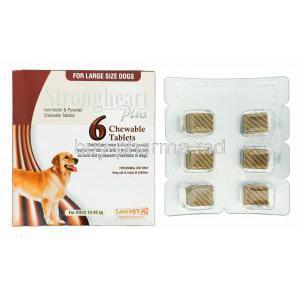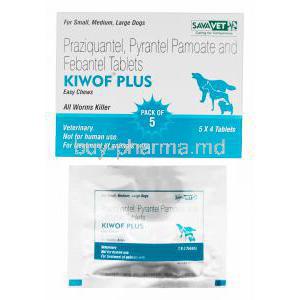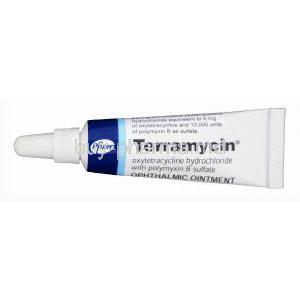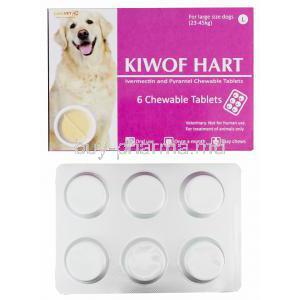Introduction to Omeprazole Oral Paste for Horses
Omeprazole oral paste is a veterinary-specific formulation of a proton pump inhibitor (PPI) designed for use in equines. Engineered for oral administration, this paste formulation ensures precise dosage delivery, especially in horses requiring sustained gastric acid suppression. The paste is palatable and convenient, supporting adherence even in high-performance equine environments.
Gastrointestinal health plays a vital role in the well-being, performance, and longevity of horses. Stress, high-grain diets, prolonged training, and frequent transportation predispose equines to gastric ulceration. Omeprazole oral paste provides a preventive and therapeutic solution in such scenarios.
This formulation is approved for veterinary use in many countries and is widely recommended by equine veterinarians for both treatment and prophylaxis of gastric ulcers. It is considered the gold standard for managing equine gastric ulcer syndrome (EGUS).
Approved and Off-Label Uses of Omeprazole Oral Paste in Equines
2.1 Therapeutic Uses
- Clinically proven for the treatment of Equine Gastric Ulcer Syndrome (EGUS)
- Reduces gastric acid secretion and promotes mucosal healing
- Effective in both foals and adult horses when used at appropriate dosages
Performance and racehorses are particularly vulnerable to ulceration due to physical and psychological stressors. Regular use of omeprazole paste is integral in mitigating this risk during training and competition phases.
2.2 Off-Label Applications
Veterinarians may recommend off-label usage in the following cases:
- Treatment of suspected gastroduodenal ulcers in foals
- Prophylactic use during prolonged transport or high-stress periods
- Co-administration with non-steroidal anti-inflammatory drugs (NSAIDs) to reduce the risk of gastric irritation
Though not always backed by regulatory approval, these uses are supported by clinical experience and emerging research in equine gastroenterology.
Mechanism of Action: How Omeprazole Paste Works in Equine Gastric Protection
Omeprazole inhibits the H+/K+-ATPase enzyme system—the final pathway for acid secretion in gastric parietal cells. By irreversibly binding to proton pumps, it effectively suppresses gastric acid production for 24 hours or more.
This mechanism fosters a more alkaline environment in the stomach, accelerating mucosal healing and reducing ulcer pain and inflammation. Peak suppression is generally observed within 3 to 5 days of continuous therapy.
Dosage Guidelines and Administration Instructions for Omeprazole Oral Paste
4.1 Standard Dosage Recommendations
- Standard treatment dose: 4 mg/kg once daily for 28 days
- Maintenance dose: 1-2 mg/kg once daily for prevention post-treatment
- Dose adjustments may be required for foals or ponies based on body weight
Acute ulcer cases typically require a full 28-day course, while chronic or recurrent cases may necessitate a longer treatment window under veterinary guidance.
4.2 Administration Technique
The paste should be administered orally using a dosing syringe, placed over the back of the horse’s tongue. Ensure no feed residue is present in the mouth at the time of administration to optimize absorption.
- Administer on an empty stomach when possible
- Do not feed for at least 30 minutes post-dosing
- Consistent timing each day improves therapeutic outcomes
Composition and Formulation Details of Equine Omeprazole Paste
Each syringe typically contains:
- Active Ingredient: Omeprazole 2.28 g per 6.15 g syringe (or as specified)
- Excipients: Flavoring agents, thickeners, stabilizers
The formulation is designed for stability in various climates and enhanced palatability, encouraging voluntary intake. Buffered ingredients protect the active drug from degradation in acidic conditions pre-absorption.
Storage Conditions and Shelf Life of Omeprazole Oral Paste
- Store at controlled room temperature (15°C–30°C / 59°F–86°F)
- Avoid exposure to direct sunlight and moisture
- Keep the cap securely closed between uses
Check expiration dates on the packaging. Dispose of partially used or expired syringes according to local veterinary waste protocols.
Potential Drug Interactions with Omeprazole Paste in Horses
Though generally well-tolerated, omeprazole may interact with other medications:
- NSAIDs and corticosteroids: Concurrent use can be beneficial in protecting the gastric lining
- Antibiotics: Omeprazole may alter stomach pH and influence drug bioavailability
- Antiparasitics: Timing of administration may affect absorption of certain oral agents
Always consult a veterinarian before co-administering multiple medications.
Side Effects and Risk Profile of Omeprazole Paste in Equine Patients
8.1 Common Side Effects
- Soft or loose stools
- Decreased appetite (transient)
- Mild gastrointestinal bloating
These effects are generally self-limiting and resolve without intervention. Continued use under supervision is typically safe.
8.2 Rare or Serious Adverse Reactions
- Electrolyte imbalances such as hypomagnesemia with prolonged use
- Allergic or hypersensitivity reactions
- Possible interference with nutrient absorption over extended periods
Monitoring of electrolyte levels and nutritional intake is advised during long-term therapy, particularly in older or metabolically sensitive horses.
Warnings and Contraindications for Equine Omeprazole Use
While omeprazole paste is widely regarded as safe and effective for equine use, certain conditions necessitate caution or complete avoidance. Horses with known hypersensitivity to omeprazole or structurally related benzimidazoles must not receive this medication due to the risk of anaphylactic reactions or dermal eruptions.
Use is contraindicated in animals with compromised hepatic or renal function, as the metabolism and clearance of omeprazole are heavily dependent on liver enzymes and renal excretion pathways. In such cases, accumulation of the drug may lead to toxicity.
Omeprazole may also interact adversely with specific antifungal agents, particularly azole-class compounds (e.g., ketoconazole, itraconazole), which compete for similar metabolic enzymes. Simultaneous administration should be avoided unless explicitly directed by a veterinarian.
Guidelines for Careful Administration and Risk Mitigation
10.1 Monitoring during Long-Term Use
For horses on prolonged omeprazole therapy, ongoing evaluation is essential. Monitoring strategies may include:
- Periodic gastric endoscopy to confirm ulcer healing or detect recurrence
- Fecal occult blood testing to identify gastrointestinal microbleeding
- Regular nutritional assessments to identify deficiencies in calcium, magnesium, and vitamin B12
Supplementation may be necessary in long-term cases to prevent latent nutrient malabsorption syndromes.
10.2 Special Situations
Omeprazole should be used with added vigilance in horses experiencing concurrent gastrointestinal or metabolic disorders:
- Colitis or inflammatory bowel conditions may alter absorption and heighten sensitivity
- Laminitic horses may require gastroprotective therapy but also need close metabolic control
Behavioral changes such as dullness, irritability, or reduced feed intake during treatment should prompt re-evaluation of ongoing therapy. Any marked deviation in performance or demeanor warrants a veterinary consultation.
Important Precautions When Using Omeprazole Paste in Horses
Discontinuing omeprazole abruptly in horses with a history of ulcers or ongoing risk factors may lead to acid rebound, aggravating gastric mucosal damage. A tapering schedule may be advised for ulcer-prone animals.
High-performance horses must be monitored carefully. Physical stress, rigorous training, and dietary shifts elevate the risk of gastric lesions, necessitating continuous gastroprotection and professional oversight.
Veterinary supervision is recommended throughout prolonged use to assess efficacy, adjust dosage, and monitor for latent adverse reactions or drug interactions.
Use in Special Equine Populations
12.1 Administration in Geriatric Horses
Aged horses often exhibit altered drug metabolism due to changes in hepatic enzyme activity and renal clearance. This may affect both therapeutic outcomes and the incidence of side effects.
- Lower initial dosages may be necessary
- Co-existing conditions and polypharmacy heighten the risk of interactions
A tailored, conservative approach is essential when managing ulcers in senior equines.
12.2 Use in Pregnant or Lactating Mares
Safety data for omeprazole use during equine pregnancy is limited. However, it is generally considered safe when administered under veterinary supervision. Usage may be justified in cases of severe ulceration or chronic gastrointestinal stress.
As omeprazole is excreted into milk in small quantities, potential exposure to foals must be weighed against the therapeutic necessity. Vigilant observation of neonates is advised when the dam is receiving treatment.
12.3 Use in Foals and Juvenile Horses
Young horses, particularly foals under six months of age, may require adjusted dosing based on developmental pharmacokinetics and body weight. Weight-based calculations must be precise.
- Close monitoring of gastrointestinal function is essential during therapy
- Developmental delays or nutrient imbalances may result from extended acid suppression
Veterinary follow-up is critical to ensure both efficacy and safety in pediatric equine patients.
Overdose Management and Emergency Protocols
In the event of accidental overdose, clinical signs may include:
- Lethargy or decreased responsiveness
- Abnormal electrolyte profiles (e.g., hypomagnesemia, hypocalcemia)
- Signs of colic or gastrointestinal discomfort
Supportive therapy is the cornerstone of overdose management. Interventions may include:
- Intravenous fluid therapy to correct dehydration and restore electrolyte balance
- Gastrointestinal protectants or adsorbents
- Monitoring of cardiac and renal function
Emergency veterinary attention is required if symptoms escalate or fail to resolve within 12–24 hours of onset.
Handling and Safety Precautions for Equine Omeprazole Paste
To maintain product integrity and ensure handler safety, the following precautions are advised:
- Always wear gloves when administering the paste to avoid dermal exposure
- Clean and reseal the syringe tip after each use to prevent contamination
- Store syringes out of reach of children and animals not intended for treatment
Dispose of used applicators in accordance with local veterinary or environmental regulations. Proper handling ensures both therapeutic reliability and safety for the handler, horse, and environment.
Omeprazole Oral Paste (for Equine) FAQ
- Can you give omeprazole in powder form to horses?
- Do ulcers go away with omeprazole?
- How do you prevent ulcers in horses?
- How to give omeprazole to horses?
- What is omeprazole used for in horses?
- What is the best time to give omeprazole to horses?
- What is the purpose of using omeprazole?
- What are the first signs of ulcers in horses?
- How to fix stomach ulcers in horses?
- Is ranitidine better than omeprazole for horses?
- How to treat a horse with omeprazole?
- How quickly does omeprazole work?
- What not to feed a horse with ulcers?
- Can you buy omeprazole for horses?
- Do horses with ulcers drink more water?
- How much omeprazole to give a horse?
- Can horses fully recover from ulcers?
- Which is better for horses sucralfate or omeprazole?
Can you give omeprazole in powder form to horses?
Yes
Do ulcers go away with omeprazole?
Yes
How do you prevent ulcers in horses?
To reduce stress, ensure that the animals have access to grass or hay whenever they need it.
How to give omeprazole to horses?
Gently place the needle into the space between the horse's teeth.
What is omeprazole used for in horses?
Treatment of gastric ulcers
What is the best time to give omeprazole to horses?
Using paste is highly effective in managing squamous disease; however, it should be administered 30 to 60 minutes before mealtime in the morning after fasting overnight for optimal results.
What is the purpose of using omeprazole?
Taking omeprazole helps decrease the production of stomach acid.
What are the first signs of ulcers in horses?
Weight loss, dull, depressed demeanor, reduced performance, resistance to aids when ridden, grumpy or aggressive behaviour when girthing, rugging, or grooming, colic-type signs, reduced appetite, chronic diarrhoea—most common in foals.
How to fix stomach ulcers in horses?
The preferred treatment for stomach ulcers in adult horses is omeprazole.
Is ranitidine better than omeprazole for horses?
Omeprazole is said to be ten times stronger than ranitidine.
How to treat a horse with omeprazole?
Gently place the needle into the gap, between the horses teeth in its mouth.
How quickly does omeprazole work?
2 to 3 days
What not to feed a horse with ulcers?
Ginger, Lucerne, Linseed
Can you buy omeprazole for horses?
Yes
Do horses with ulcers drink more water?
It still depends on the horse.
How much omeprazole to give a horse?
One syringe is enough to administer medication to a 1250-pound horse at a dosage of 1.8 milligrams of omeprazole per kilogram of body weight.
Can horses fully recover from ulcers?
The majority of lesions heal within 21-28 days
Which is better for horses sucralfate or omeprazole?
Omeprazole shows results compared to using sucralfate when it comes to lessening the intensity of glandular and squamous stomach ulcers.






